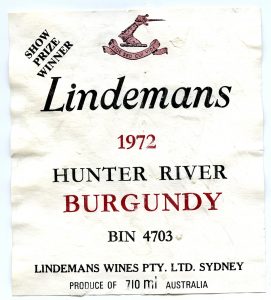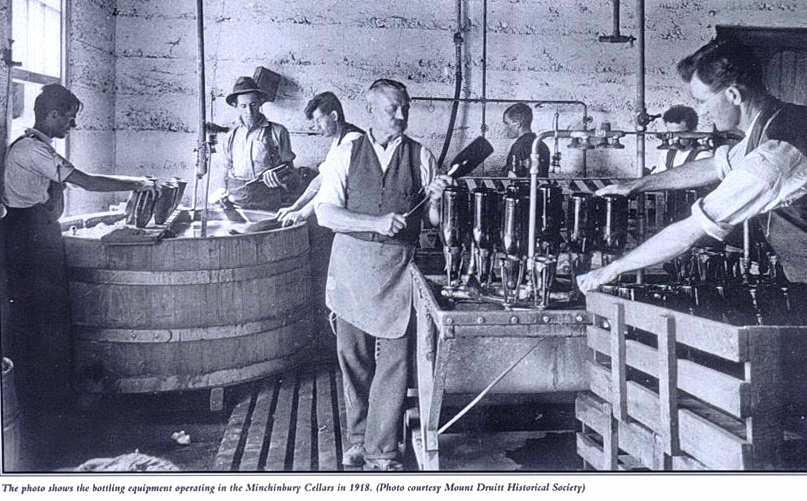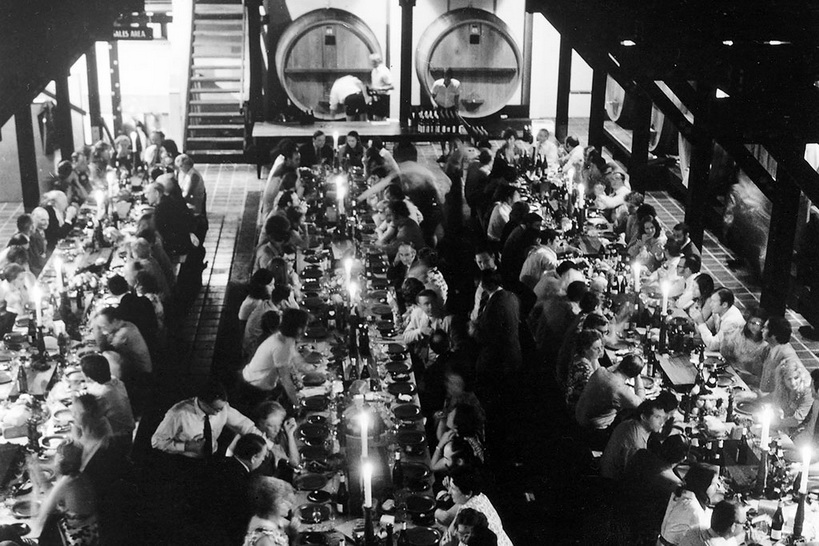Money, Marketing and Madness
You can see it, can’t you? The marketing director comes back from his meeting with the CEO, and addresses his troops.
‘We need to show stronger growth,’ he tells them. ‘The fastest way to do that is growth by acquisition, and we have an open cheque book.’
The eyes of the young marketing minds light up as they shout ‘yeah, let’s do it’, accompanied by high fives. They used to work for Fabergé, Kimberly-Clark, David Jones, Lion-Nathan and Coca-Cola.
It was the 1980s, when corporate raiders swept across Australia buying wineries; or the 1990s when there wasn’t enough Chardonnay to go around and Robert Parker fell in love with Duck Muck; or the new millennium when the export boom was in full swing, with huge bladders of cheap Aussie plonk crossing the oceans to Britain and America.
Wineries were bought and sold like shares on the stock exchange. Others were simply allowed to die or swallowed by the suburban sprawl. Basedow’s, Stonyfell, Kaiserstuhl, Reynella, Minchinbury, Rothbury.
History and Mystery
Others were rebranded by the bright young marketing minds, like Lindeman’s. One of our great wine brands, once up at the top with Penfolds et al, making stunning wines from the Hunter to Coonawarra.
‘Yeah, look at those labels!’
‘It needs a serious make-over. A new identity, a new narrative.’
‘Hey, I read that low alcohol wines are the coming thing – we could be at the head of the trend, or even set the trend.’
‘What do we do with Rouge Homme? What about that shocker of a label?’
‘Does anyone remember why we bought that brand?’
Silence all round.
‘History, who needs it? Stories is what we need. Marketing in the new millennium is story telling. Wine is such a blokey business; we need stories about women in wine, like Eliza Lindeman.’
Yeah! All agreed and high fives all around
Indigestion
The challenges at Southcorp were far more dramatic.
‘The stock market still hasn’t forgiven us for buying Rosemount,’ said the CFO. ‘They say 1.5 billion was far too much.’
‘Fosters paid more than that for Beringer-Blass,’ CEO John Ballard argued, ‘and we bought more than a winery, we bought a crack management team with it.’
‘You mean a fucked up management team,’ said chairman Brian Finn.
Ballard’s face was a grimace. ‘It was the integration of the 2 teams that was fucked up.’ He shrugged and added, ‘are we done? I’ve got to put the final touches on the revamped organization chart before we announce it to the press.’
Ballard had taken over as CEO earlier in 2003. He was still smarting form the remark made by one analyst who’d said: ‘He’s not a boom recruit. He’s not the big name the market was looking for.’
Ballard was new to the wine business. He had built APD/Smith’s Snackfoods into a major force, and then run United Biscuits Asia Pacific. The last few years he’d focused on his work as a board member of top companies. He’d never experienced a mess like the one he found himself in now.
Walking Winemakers
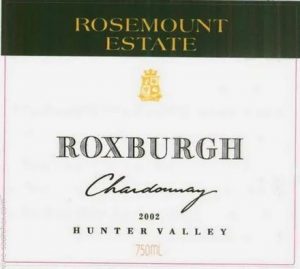 It wasn’t just the stock market and Rosemount’s management team; some of Australia’s top winemakers had walked out after Rosemount’s Chardonnay wizard Philip Shaw took over as chief winemaker: Neville Falkenberg, Philip John, Geoff Henriks, Ian McKenzie and even Grange winemaker John Duval. All gone.
It wasn’t just the stock market and Rosemount’s management team; some of Australia’s top winemakers had walked out after Rosemount’s Chardonnay wizard Philip Shaw took over as chief winemaker: Neville Falkenberg, Philip John, Geoff Henriks, Ian McKenzie and even Grange winemaker John Duval. All gone.
Later that week, Ballard told the press: ‘As we put behind us the problems we have caused for ourselves, I think the Rosemount acquisition will prove to have been a very good one.’ He had his fingers crossed behind his back.
Two years later, Ballard walked as well. Southcorp was a Boa Constrictor that had swallowed a very large pig. A billion dollar write-down hadn’t reduced the pressure on its stomach – it just poured fuel on the ire of the analysts and shareholders. Worse, revenue was half of what it had been when Ballard took over. Then Fosters had launched a hostile take-over bid.
Ballard had read about the shareholder meeting in the Fin Review. There were angry scenes. One shareholder argued that chairman Brian Finn should resign since he had been ‘a party to all the disastrous decisions that had brought this company to its knees.’
Another shareholder said: ‘It’s all right to sit up there in your flash suits and get your big money, but none of you are suffering like we are. I’m an investor. I rely on the income from dividends.’
Buying Back the Farm
Special Homecoming For Much-Loved Metala was a headline in a recent WBM mailer. The Adams family had bought the brand back from Treasury Wine Estates, a rare good news story.
Metala is the oldest family-owned Cabernet vineyard in the world, and one of the oldest Shiraz vineyards in Langhorne Creek. I had long wondered how much local content had remained in this once great red from Langhorne Creek, which sells for about $10 these days.
Not much in recent years, according to Guy Adams. He says: ‘The homecoming and relaunch of the brand means that when wine lovers buy a bottle of Metala wine, they will once again be getting the original, rich and full bodied Metala fruit they’ve come to expect.’
Before Wolf Blass picked Langhorne Creek as one of South Australia’s great wine areas, the late Peter Lehmann made the wine for Stoneyfell. I remember a night when we had dinner in town in the early eighties, when my best friend Reg brought along a 1966 Grange, and I brought a 1967 Metala. It was the better wine of the two, we all agreed. 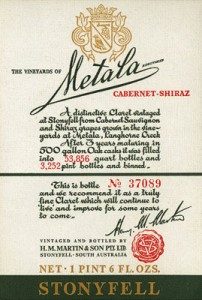
Trashing hallowed Names
This story made me think of all the great brands that were swallowed up by the corporate raiders in the greed- and alcohol-fuelled 1970s, 80s and 90s.
Adelaide wine merchant Woodley’s once sold the Treasure Chest series of fabled Coonawarra reds. The pretty Treasure Chest label ended up in the clutches of Treasury Wine Estates, and soon graced $5 bottles of cheap and nasty bubbly.
It seems the marketing people at TWE despise all things old, and any kind of tradition, or don’t know what to do with it because they learnt their craft selling beer, cosmetics and toilet paper.
Lindemans bought Rough Homme in the sixties from the Redman family. Years later, the brand went through the hands of various corporate owners until the Digiorgio Family bought the winery in 2001 (which was the death knell for the label according to the Redmans). There was no official death notice or burial.
Led by CEO Ray Kidd, Lindemans had a towering reputation until it was bought by Philip Morris, and then passed through numerous uncaring hands until it ended up at Southcorp and then TWE. It now graces low-alcohol concoctions with utterly silly stories about Eliza Lindeman and her daughters.
What happened to the famous Hunter River Burgundies? Don’t ask. The Coonawarra Trio still exists somewhere in the bowels of TWE, well-hidden from public view. Most likely dead and awaiting burial.
Stanley Leasingham – after various owners that included Heinz of 57 varieties fame, this once great brand was bought by Hardy’s in the late eighties and later ended up in the hands of private equity firm Accolade, bereft of life. Tim Adams bought the winery and equipment.
Thomas Hardy and Sons – this was one of our greatest wine companies, which ended up owning Chateau Reynella, Stanley Leasingham and Houghtons in the West. It merged with Berry-Renmano in the early nineties and became BRL Hardy before it was gobbled up by Accolade, which became Champ Equity, which became part of an international conglomerate called Constellation brands.
Hardy’s flagship wines are fairly recent creations, but at least they honour their founders Thomas and Eileen Hardy with serious wines. Chateau Reynella, named after the man who planted the first commercial vineyard in South Australia, is now a housing estate, which may be a better fate than ending up gracing cheap plonk.
Quelltaler became Annie’s Lane some years ago, and its role in the TWE theatre was to produce rich, soft, easy-drinking affordable table wines. No more interesting white Burgundies made from Semillon, or brilliant Rieslings. TWE recently sold the vineyards to Warren Randall of Seppeltsfield, but kept the Annie’s Lane label which will no doubt end up gracing some vin ordinaire in the near future.
Minchinbury was once a powerhouse sparkling wine maker on the outskirts of western Sydney, with its best Great Wesstern bubblies fetching a much higher price than Penfolds Grange.
Today almost all remnants of the once proud estate have been swallowed up by another housing estate near the Great Western Highway. The once hallowed brand belongs to TWE these days, and graces $6 bottles of awful wines with names like Minchinbury Dolce.
The New Guard
The sixties and seventies saw a whole lot of new wineries burst onto the scene; most of them crashed and burnt or were forced to regroup, but some of them built big reputations.
The ambitious Rothbury Estate in the heart of the Hunter Valley was the brainchild of Len Evans and Murray Tyrrell, and the expectations were flying high when it came to life in the early seventies.
Len and Murray put all their eggs into 2 famous baskets, planting 400 hectares to Semillon and Shiraz. The fickle punters never loved these varieties like Len and Murray did, and chased the fancy new Chardonnays and Pinots Noir. That was a serious problem for Rothbury. Various acquisitions broadened the company’s offerings, but looked like random hits rather than planned acquisitions.
Lexicon tells us that, ‘in 1995, despite fierce opposition from Evans, Rothbury Estate was hostilely (sic) taken over by Mildara Blass.’ Some people should stick to whatever they’re good at instead of mangling the English language, ja? What happened in between is a fascinating story of its own. Today the Rothbury name graces a range of $10 non-vintage wines of no apparent distinction.
Bob Oatley built the Rosemount brand into an icon, on the back of some big Chardonnays from the Hunter and fine reds from McLaren Vale. After a decade-long struggle, the once famous Rosemount brand died of mortal wounds inflicted by series of massive marketing blunders. OK, you can still find bottles of it in the discount bins of the big chains, but they bear no resemblance to the wines of the glorious past.
The story goes that Bob Oatley talked Fosters into buying Southcorp, in the hope that they’d return the Rosemount brand to its former glory. Fosters did no such thing; instead it spun off the whole wine business – including Penfolds – into Treasury Wine estates, telling the media that it was a distraction to the beer business.
The great cask hall at Rothbury Estate.

